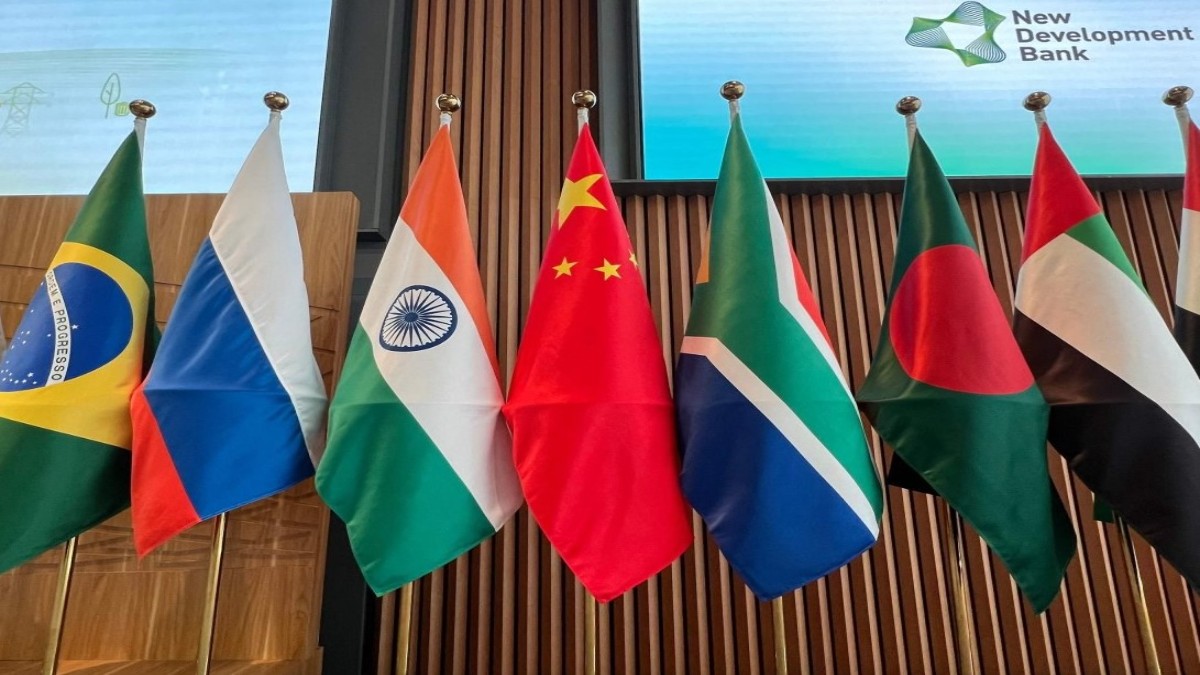The statistics are stark. The combined GDP of the four largest members of BRICS – Brazil, Russia, India and China – has overtaken the combined GDP of the four largest Western members of the G7 – the United States, Germany, Britain and France.
Measured by purchasing power parity (PPP), the GDP of the four leading BRICS economies is $64.7 trillion. The GDP (PPP) of the four leading Western G7 economies is $43.9 trillion.
Here’s the break-up: China ($37.1 trillion), India ($16 trillion), Russia ($6.9 trillion) and Brazil ($4.7 trillion). The total: $64.7 trillion.
The G7 break-up: US ($29.2 trillion), Germany ($6.0 trillion), France ($4.4 trillion) and Britain ($4.3 trillion). Total: $43.9 trillion.
Not only have the BRICS nations surpassed the G7 economies, they are growing at a faster annual pace. For example, Britain (0.9 per cent), Germany (0.3 per cent), France (0.5 per cent) and the US (2 per cent) will average GDP growth of less than one per cent.
In contrast, India is growing at 6.5 per cent, China at 4.8 per cent, Russia at 3 per cent and Brazil at 3.4 per cent. The average among the four is 4.4 per cent a year compared to the G7’s 1 per cent. The gap between the West and the Global South is growing.
Obviously, geopolitical power depends on a host of other factors as well. The US has dominated the world as the sole superpower since the collapse of the Soviet Union in 1991. China’s emergence as a challenger to US global supremacy represents the most decisive shift in global power from the West to the Global South in over three centuries.
Impact Shorts
More ShortsAs late as 1700, China and India accounted for over 50 per cent of global economic output. Invasive colonialism and the transatlantic slave trade changed the course of history. Now another transformation is taking place. The combined GDP (PPP) of China and India is currently $53.1 trillion ($37.1 trillion and $16 trillion respectively).
That is already over 33 per cent of total global GDP. By 2050, it is estimated that China and India will once again, as in 1700, command over 50 per cent of total global GDP.
This obviously brings with it new opportunities and challenges. Despite their differences, China and India will need to learn to live as good neighbours just as Germany and Britain have learnt to live as allies after the two devastating world wars.
India and the West
The West has never been a true friend of India. When India was newly independent, the West patronised it but did everything to support Pakistan at the United Nations and other international forums.
India was at the time too small to be taken seriously by the West. The US supported Pakistan during the Bangladesh liberation war in 1971. In 1998, it imposed harsh economic and technology sanctions on India following India’s nuclear test. The objective was to thwart India’s growth till it accepted US suzerainty like Japan had been forced to.
India’s refusal prompted the US to try another tactic in the early-2000s. It co-opted India with the India-US civil nuclear deal in the expectation that it would place a tourniquet around India’s independent nuclear plans while allowing US firms to build commercial nuclear reactors in India.
Neither has happened. The civil nuclear deal remains largely on paper. US nuclear reactors have been waiting for 20 years for the Indian government to amend the nuclear accident liability clause. The proposed legislation is in limbo.
US President Donald Trump has lent clarity to America’s bid for global hegemony. He knows China is a tough nut to crack. What the West fears now is a new alliance forming between China, India and Russia.
With Indian Prime Minister Narendra Modi scheduled to visit China for the Shanghai Cooperation Organisation (SCO) Summit on August 31– September 1, Washington will keep a close eye on the optics between Modi, Russian President Vladimir Putin and Chinese President Xi Jinping.
The presence of America’s client state Pakistan as well as NATO member Türkiye at the SCO Summit could see a realignment of forces along different axes.
For India, the US, despite tariffs, remains an important economic, defence and technological partner. But in the rapidly changing geopolitical environment, India has to adapt and act proactively.
The need is to form a new quadrilateral of alliances – the US on one side, Russia on the other and China, kept at a distance, making up the third corner of this four-cornered quad with India in the fourth corner.
China’s reformist leader of the 1980s Deng Xiaoping advised a then poverty-ridden China to “hide its strength, bide its time.”
India has spent decades underplaying its strength, punching below its geopolitical weight and biding its time
That era is over. Europe is shrinking economically. The US is a fractured society, at war with itself. In the past, gun shootings in US high schools were an indication of America’s social stress.
Today, armed officers patrol the streets of Washington, DC as Trump orders the federal government to take over law enforcement of the national capital, bypassing the elected mayor. He is threatening to do the same in Chicago.
These are Democratic cities with large black and Hispanic populations. America’s racism, kept locked up in a closet for years, has burst out into the open under Trump and his MAGA cohorts.
No one should be surprised in a country founded in 1776 on seized Native American land and built on African slave
labour.
The writer is an editor, author and publisher. Views expressed in the above piece are personal and solely those of the author. They do not necessarily reflect Firstpost’s views.
)